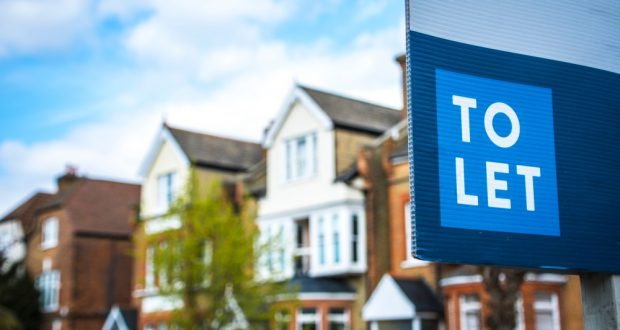Buy-to-let mortgages: What aspiring landlords need to know
12-21-2021
Buy-to-let mortgages: What aspiring landlords need to know

By admin in Mortgages & Home
Thinking about becoming a landlord in 2022? Paul Brett offers some thoughts on what you should consider when financing a buy-to-let property
Becoming a landlord can be a lucrative business but there are many things you need to be aware of if you want to venture into this world.
Unless you are a cash buyer, to be a landlord you will need a buy-to-let (BTL) mortgage and some money up front. A deposit of at least 20% is required although many lenders insist on 25%
The lender will want to ensure you can afford to pay the mortgage each month and generally, you need to be a homeowner although a few lenders may consider non-homeowners.
Rental yield
An extremely important factor is that the rent you charge must be higher than your monthly mortgage repayment and this is called the gross rental yield.
You can calculate this by dividing the annual rental income of the property by the purchase price and multiply by 100 to get the percentage.
For example, annual rental income is £6,000 and the property cost £100,000.
6,000 ų 100,000 x 100 = 6 so the rental yield is 6%.
Affordability tests
Obviously, you want to make a profit but it is also a regulatory requirement that lenders have to apply affordability tests. These consists of an interest cover ratio (ICR) and a stress test.
The ICR is usually between 125% and 145% of the mortgage payment covered by rental income. This means the rent you charge must be at least 25% to 45% higher than the mortgage payment. The ICR will depend on the lender and the mortgage product.
The stress test is to ensure you can afford the mortgage payments if interest rates rise within the next five years.
For example, if your mortgage interest rate is 3% and you take out a variable rate or a two or three-year fixed rate mortgage, the lender will apply the stress test rate. This is 5.5% or 2% higher than the rate you pay, whichever is higher.
This is not set by the lender but by the Prudential Regulatory Authority, part of the Bank of England. Although you are only paying 3%, the lender will base its affordability calculation as if you are paying 5.5%.
However, if you take out a five-year fixed rate, there is no need for the lender to use this stress test. They will calculate your affordability using the actual rate you are paying, so in this example it is 3%.
This is important because you can borrow more money if your affordability is being assessed on a lower mortgage rate.
Interest-only mortgage
The vast majority of BTL mortgages work on an interest-only basis which means each month you pay just the interest on the loan, you donít pay off the capital, i.e. the original cost of the property.
For instance, you buy a house for £100,000 and take out a 25-year mortgage and the monthly interest you pay is £250. At the end of the 25 years, you still owe the lender £100,000.
Taxes and other expenses
When you buy the property there will be stamp duty to pay and this is charged at 3% above residential property. For example, there is no stamp duty on homes up to £125,000 but for BTL properties you must pay 3%. Similarly, homes worth between £125,001 and £250,000 incur a 2% charge but for a BTL property it is 5%.
There have been changes to tax rules that has made property investment a bit more challenging. You can be an individual landlord or set up as a limited company but itís best to get advice from a tax accountant that understands the BTL market.
There are also expenses to consider such as electrical and gas safety certificates, smoke alarms, landlord insurance, Energy Performance Certificate, maintenance and repairs.
Energy Performance Certificates
All rental properties must have an Energy Performance Certificate (EPC), which indicates the energy efficiency of the property.
The rating is from A (excellent) to G (very poor) and since April 2018 all new tenancies must be at least E rated. If properties are F or G rated the landlord must upgrade them and cannot legally let them out, unless they have a registered exemption.
However, the government wants to go further than this and has proposed all rental properties be at least a C rating by 2025 for new tenancies and 2028 for existing tenancies. Much of the UK housing stock is old so it is no surprise that over half of all properties are rated D or lower. So, if you are thinking of buying property to rent out you should bear this in mind.
Landbay is one of a handful of BTL lenders who have introduced green mortgages this year. If you buy or upgrade a property to A, B or C rating you can apply for a green mortgage which gives a discount on the interest rate.
Buy-to-let lenders
There are many BTL lenders from mainstream banks and building societies to specialist lenders who can accommodate more complex borrowing requirements.
Usually, you cannot come directly to specialist lenders like ourselves as we work directly with brokers. I would advise budding landlords to speak to a mortgage broker who understands the BTL market. There are also specialist BTL brokers who can help with more complex situations. Brokers will be able to source the most appropriate mortgage for you.
Landbay is a multi-award-winning lender and The Personal Finance Awards is our latest accolade. We are honoured to have been voted as Best Buy to Let Lender and are thankful to readers of themoneypages.com.
Paul Brett is managing director, intermediaries, at specialist buy-to-let lender Landbay

